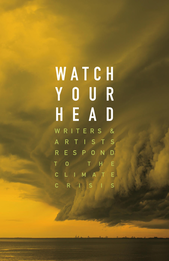|
TRANSLATIONS OF CORMORANTS One of the delightful things about drawing is the looking – in drawing you give attention to details that are often otherwise missed – like the space around a bird. This video belongs to a poem I wrote for the sculptor and hunter Billy Gauthier who I listened to at a symposium in 2020 at Toronto’s Power Plant. He was one of the speakers in a group of Indigenous artists and scientists from the Arctic and Amazon, come together to talk about climate change. It was an incredible conversation to listen to. Billy, in particular, inspired me deeply. And continues to. Here is Billy. Through this past spring and summer double-breasted cormorants have become my companions, especially those belonging to a colony on the Humber River near home. They glide above our kayaks in the early morning, skimming the surface of the Leading Sea (also known as Lake Ontario). We've marvelled at their nests, hooked beaks, bright green eyes. The adult bird is a deep grey and brown but the youngsters have downy white chests. They are called gaagaagiishib in Ojibwe and they've been here a long time. The cormorant is a conservation success story – their population was close to making the endangered list some time ago and now they are thriving. Unfortunately there is a lot of misinformation about them, mostly that they're a nuisance and a threat to fish. These are unfounded claims. Distressingly, their future is again in jeopardy. From Sept 15 - December 31st of 2020, the Ontario government has approved their long slaughter. People now have permission to kill up to 15 of these birds a day to "control" their numbers. Toronto visual artist, conservationist and activist, Cole Swanson is currently hard at work to challenge this. You can read about his efforts (along with Gail Fraser, professor of environmental and urban change at York University) and the research behind his efforts here. For those of you interested in the film-making process: My partner, Paul Esposti, photographed the cormorants in flight; I used Paul’s photos to draw stills with ink and pencil on vellum (about 90 drawings!). We then photographed each drawing, and Paul turned them into an animation, created the sound design and edited. This is our first attempt at animation, and we’re just getting started. Paul and I both feel like these birds are our neighbours and teachers. We made the film thinking about how much might be resolved in our world if we could learn to care for a cormorant, for the sky and space around a soaring bird. Paul David Esposti is a photographer and videographer who does his best to listen to birds. One of the ways he listens is through looking closely. Paul's photographed birds from Costa Rica to the Salish Sea and he especially likes photographing them near his home in Etobicoke, Ontario. You can find out more about Paul and see his photographs at pauldavidesposti.com
Jessica Joy Hiemstra is a designer and visual artist who does her best to listen to birds. One of the ways she listens is through drawing. She's also written several books of award-winning poetry, most recently, The Holy Nothing (2016) with Pedlar Press. You can find out more about Jessica here: jessicahiemstra.ca. Comments are closed.
|
|
ISSN 2563-0067 © Copyright 2023 | Watch Your Head Contributors Sign up for our Newsletter Buy our print anthology Watch Your Head: Writers & Artists Respond to the Climate Crisis (Coach House Books, 2020). |
